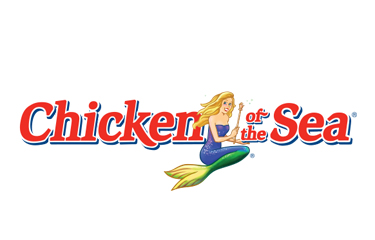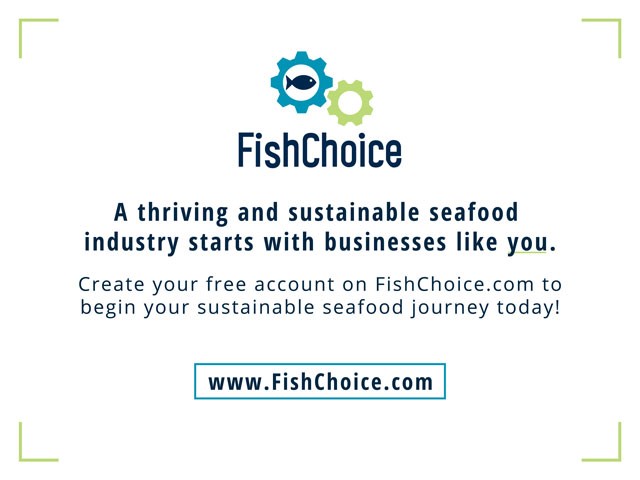Chicken of the Sea is featured in The Top 25: Sustainability & Conservation list, published by SeafoodSource on 24 September, 2020. Thai Union North America Director of Sustainability Roxanne Nanninga speaks here on behalf of the company.
SeafoodSource: What kind of trends have informed Chicken of the Sea’s latest sustainability/conservation efforts?
Nanninga: In the beginning, Thai Union established our industry-leading sustainability program because of some of the negative reports that came out, about Thailand and Thai seafood and all of the labor implications, in particular. The CEO of Thai Union, Thiraphong Chansiri, as a member of the family that founded Thai Union, felt personally motivated to end these bad practices and to launch Thai Union into a leadership position in the industry. He brought on Dr. Darian McBain as Global Director of Sustainability, when she started at Thai Union amidst those negative reports. She took Khun Thiraphong’s direction to heart and really got to work. She established our comprehensive SeaChange Sustainability Strategy. Since then, we have built a sustainability team, established many great partnerships, and put programs in place that are truly industry-leading.
The initial portion of our SeaChange strategy covered up to 2020, which we have now arrived at. All of the commitments we’ve made in that first iteration of our strategy – including safe and legal labor initiatives and our Tuna Commitment, which has been establishing fishery improvement projects towards achieving MSC [Marine Stewardship Council] standard – are on track, and we’re continuing full-speed ahead. Now, we’re also looking towards our 2025 vision for the strategy, examining what types of trends we’d like to be a part of and how we want to remain leaders in this space. The work that we’re doing already puts us there pretty solidly, but we really believe there is more to be done. As such, we’ve recently taken on a new framing: ‘Healthy Living, Healthy Oceans.’ This is Thai Union’s global strategy – embedding sustainability and nutrition. We’re looking at trends around continuing the environmental and social positive impacts, but then also looking at climate impacts and how we can reduce our overall carbon footprint through our operations, as well as where seafood is a nutritious and climate-friendly choice over land-based proteins and – in some cases – non-proteins.
We’re looking at how we can leverage those climate and nutrition trends together alongside the existing work. It’s a really exciting direction for the future and one we believe will resonate in a new way with the general public. We want to be seen as a sustainable, healthy, nutritious choice to eat, and also one that is climate-friendly.
SeafoodSource: What key features serve to set Chicken of the Sea’s sustainable seafood offerings apart in the market?
Nanninga: Chicken of the Sea is comprised of both a shelf-stable and frozen business. There’s sustainable product offerings on both sides and we’re doing really interesting things to drive wider sustainability across both.
For the shelf-stable side, as part of Thai Union’s Tuna Commitment, we have a fishery improvement project story that no one else is offering in terms of change at-scale. We have 10 active fishery improvement projects that Thai Union funds and operates in tuna involving multiple gear types and ocean areas. For example, one of our largest FIPs is in the Western Central Pacific– it’s a purse-seine FIP – with one of our biggest fishing suppliers out of that region. It’s a really massive FIP, in terms of the number of vessels involved and the area that comes into play, which means that the changes take time, but they are making progress. There aren’t many companies implementing FIPs at such a large scale – the number and the diversity of these FIPs is really special. We also have a Vessel Code of Conduct and Improvement program that goes alongside these efforts. We conduct labor audits across all of our supplying tuna vessels in the world, and this year, we’re really focusing on our FIPs. We want to make sure that the vessels involved in these FIPs come up to a true best-in-class standard for both their environmental work and their labor conditions. Tying those together has been exciting and innovative.
On the frozen side, we’re dealing with aquaculture for the most part, and primarily shrimp. The farmed shrimp industry is challenging when it comes to sustainability – it’s small-scale farmers with vastly different ways of operating. We’re the largest shrimp importer into the United States, so we have a big footprint sourcing from farms across Asia and Latin America. To tackle sustainability challenges at this scale we’ve teamed up with NGOs like the Monterey Bay Aquarium and Conservation International – with multiple other partners connected through various projects – to drive change on an area-based scale. We have projects in Indonesia and India where we’re trying to involve the farmer in a philosophy of change to drive pre-competitive cooperation for environmental improvement. These improvements are geared towards meeting Monterey Bay Aquarium Seafood Watch standards for the entire region. We call this improvement initiative with Monterey Bay Aquarium: SeaChange Ignite. We’re driving area-based improvement in both shrimp aquaculture and small scale wild blue swimming crab, which are our two largest commodities on the frozen side. It’s really an improvement model, trying to bring whole regions up to Seafood Watch standards.
SeafoodSource: How does sustainability factor into your overall mission and strategy as a business?
Nanninga: In North America specifically, in response to the recent movements for gender equality and racial justice, and the fact that we care deeply about these issues – not only for our own employees, but also for the communities where we work and sell our products – we have decided to make Diversity and Inclusion a part of our SeaChange strategy. We have four pillars of SeaChange, and the fourth is people and communities, so we’ve embedded this idea of social justice, diversity, inclusion, and equity into this portion of our strategy. The idea being that we want to make improvements to our own company, through things like more equitable recruiting, hiring, and advancement of our staff. We’re also trying to think holistically about what that looks like in the broader scope – how do we create partnerships - what other organizations out there might be able to help us expand our impact in ways that are meaningful.
Our Diversity and Inclusion efforts are now part of the SeaChange strategy for North America.
SeafoodSource: How does Chicken of the Sea approach sustainable, responsible development?
Nanninga: We are aligned with the United Nations’ Sustainable Development Goals and we’re always thoughtful of the livelihoods and social components of any of the work that we do. We make sure that communities are considered and that there aren’t negative social impacts from the environmental work, and if there are, we try to find ways of managing that. We think of these things as holistically as possible from the very beginning.








